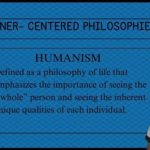The Synergy of Yoga and Humanistic Philosophies: A Holistic Exploration
Yoga has long been associated with physical health and mental well-being, but its deeper connections to humanistic philosophies remain underexplored. This article delves into the profound ways in which yoga aligns with and embodies humanistic principles, emphasizing personal growth, self-awareness, and ethical responsibility. The discussion will cover key concepts, historical evolution, current practices, and future implications, offering actionable insights for those seeking to integrate yoga into their lives.
Introduction
Yoga is often perceived as a practice limited to the realms of physical fitness and stress management. However, when examined through the lens of humanistic philosophies, it becomes clear that yoga is not only a physical discipline but also a profound spiritual and ethical practice aimed at self-actualization and the betterment of humanity. This article seeks to unravel how yoga and humanistic philosophies align, exploring their historical roots, current applications, and future potential in promoting individual and collective well-being.
Key Concepts
Before diving into the intersection of yoga and humanism, it is important to define key concepts that will guide the discussion:
- Self-actualization: A key humanistic goal where individuals strive to realize their fullest potential.
- Mind-body unity: Yoga teaches that the mind and body are interconnected, a concept deeply aligned with holistic humanistic perspectives.
- Ethical responsibility: Both yoga and humanistic philosophies promote a sense of duty toward oneself and others, grounded in compassion and empathy.
Historical Context
Yoga, originating in ancient India, has philosophical roots in several spiritual traditions, including Hinduism, Buddhism, and Jainism. Its ancient texts, such as the Yoga Sutras of Patanjali, emphasize ethical principles that resonate strongly with humanistic ideals. These include ahimsa (non-violence), satya (truthfulness), and svadhyaya (self-study).
Humanistic philosophies, particularly as articulated by thinkers like Carl Rogers and Abraham Maslow, emerged in the 20th century with a focus on individual potential and well-being. Both yoga and humanism emphasize the development of the self and the pursuit of purpose, although they approach these goals from different cultural and historical perspectives.
Current State Analysis
In contemporary practice, yoga has evolved into various forms, from the physical postures of Hatha Yoga to the meditative practices of Raja Yoga. Despite its physical aspects, yoga’s spiritual dimension remains essential, emphasizing mindfulness, ethical living, and a holistic understanding of well-being. This aligns with modern humanistic approaches that advocate for integrated mind-body health.
Studies show that yoga contributes to psychological resilience, reducing symptoms of anxiety and depression. In particular, practices such as mindful breathing and meditation foster self-awareness, a core tenet of both yoga and humanism. Yoga practitioners often report increased feelings of interconnectedness, echoing the humanistic focus on interpersonal relationships and community.
Practical Applications
Yoga offers practical methods for achieving self-actualization, ethical living, and community engagement. Below are several examples of how yoga’s principles can be integrated into everyday life:
- Personal Growth: Meditation practices, such as Vipassana, encourage self-reflection, helping individuals identify and address personal shortcomings.
- Interpersonal Ethics: The principle of ahimsa can be applied in interpersonal conflicts, encouraging non-violent communication and empathy.
- Physical Health: Regular practice of asanas (postures) promotes physical fitness, which is essential for overall well-being and supports mental clarity.
Case Studies
To better understand how yoga aligns with humanistic principles, let’s explore real-world case studies:
| Case Study | Yoga Practice | Humanistic Outcome |
|---|---|---|
| Yoga in Correctional Facilities | Meditation and Mindfulness Training | Increased self-awareness and reduced aggression among inmates. |
| Yoga in Schools | Introduction of Asanas and Breathing Techniques | Improved emotional regulation and academic performance in students. |
| Corporate Wellness Programs | Workplace Yoga Sessions | Reduced stress and improved employee well-being. |
Stakeholder Analysis
Understanding the impact of yoga requires an analysis of the various stakeholders involved. These include:
- Practitioners: Individuals engaging in yoga for personal growth and health benefits.
- Instructors: Teachers who guide students in ethical and physical aspects of yoga.
- Healthcare Providers: Professionals who may incorporate yoga into treatments for stress, anxiety, and chronic pain.
- Educational Institutions: Schools and universities adopting yoga programs for students’ emotional and physical well-being.
- Corporate Leaders: Business owners integrating yoga into employee wellness programs.
Implementation Guidelines
To integrate yoga into everyday practice while honoring its humanistic aspects, consider the following guidelines:
- Start Small: Incorporate 10-15 minutes of meditation or mindful breathing into your daily routine.
- Ethical Awareness: Reflect on how your actions align with yoga’s ethical principles, such as ahimsa (non-violence).
- Community Engagement: Join or create a group yoga session to foster community connections.
- Consistency: Regular practice, even if brief, builds both physical resilience and mental clarity.
- Adaptability: Tailor yoga practices to fit your specific needs and lifestyle, acknowledging that yoga is not a one-size-fits-all practice.
Ethical Considerations
Yoga, while deeply personal, also has broader ethical implications. Practitioners are encouraged to engage in self-reflection on issues such as cultural appropriation and commercialization. Yoga’s roots in Eastern spiritual traditions should be respected, and care should be taken not to reduce it to mere physical exercise. Additionally, practitioners should consider how their yoga practice impacts their relationships and community, ensuring that it fosters empathy and ethical responsibility.
Limitations and Future Research
While yoga has been widely recognized for its benefits, there are limitations to its current application, particularly in Western contexts where it is often commercialized and stripped of its deeper spiritual and ethical elements. More research is needed to explore how yoga can be fully integrated into fields like mental health and education without losing its cultural and philosophical roots.
Future research should also investigate the long-term psychological and societal impacts of yoga when practiced as a holistic discipline, incorporating its ethical and spiritual dimensions. There is also a need to examine how yoga can be adapted to diverse populations, including those with physical or mental health challenges.
Expert Commentary
From a multidisciplinary perspective, yoga and humanistic philosophies share a deep commitment to personal growth, ethical living, and the holistic well-being of individuals and communities. Experts agree that when practiced in its full form—combining physical, mental, and ethical elements—yoga offers not only health benefits but also a pathway to self-actualization and ethical responsibility.
Ultimately, yoga serves as both a personal and collective tool for transformation, aligning with humanistic values that emphasize compassion, self-awareness, and community engagement. The integration of yoga into diverse settings—from schools to corporations—highlights its universal applicability and potential to contribute to a more compassionate and ethical world.
Finding Inner Peace Through Yoga: A Holistic Approach to Well-Being
Introduction
In today’s fast-paced world, finding inner peace can often seem elusive. With ever-increasing stress, anxiety, and demands on mental and physical well-being, yoga has emerged as a holistic solution. Rooted in ancient practices, yoga offers a pathway to peace, not only through physical exercise but by integrating mental, emotional, and spiritual wellness. This article delves into how yoga facilitates inner peace and well-being, exploring its historical context, modern applications, and its enduring relevance.
Key Concepts
- Yoga as Union: Yoga, derived from the Sanskrit word “Yuj,” means to unite. It seeks to create harmony between body, mind, and soul.
- Pranayama (Breathing Techniques): Breath control practices that regulate life energy, promoting calmness and focus.
- Asanas (Physical Postures): Physical postures designed to enhance strength, flexibility, and relaxation.
- Meditation: A practice that enhances mental clarity and mindfulness, fostering inner peace.
- Mind-Body Connection: The practice of yoga emphasizes the interconnectedness of physical, mental, and emotional well-being.
- Ahimsa (Non-Violence): One of yoga’s moral principles, promoting compassion toward oneself and others.
Historical Context
Yoga’s history dates back more than 5,000 years, originating in ancient India. Early texts, such as the Vedas and the Upanishads, mention yogic practices as a means of spiritual awakening. The classical period of yoga is marked by the Yoga Sutras of Patanjali, which systematized and codified the practice into an eight-limbed path (Ashtanga Yoga). Each limb represents different aspects of self-discipline and control, guiding practitioners toward ultimate inner peace, or Samadhi.
In the 20th century, yoga spread globally, evolving from a spiritual discipline to a popular wellness practice. Influential figures like Swami Vivekananda and B.K.S. Iyengar introduced yoga to the West, where it gained recognition for its physical and mental health benefits.
Current State Analysis
Today, yoga is practiced by millions worldwide, with diverse approaches that range from physically intensive styles like Ashtanga and Power Yoga to more meditative forms like Hatha and Yin Yoga. Studies show that regular yoga practice can reduce stress, improve mental health, and foster a greater sense of inner peace. A survey conducted by the National Center for Complementary and Integrative Health (NCCIH) revealed that 85% of yoga practitioners experience reduced stress, and 55% report improved sleep.
Modern yoga also emphasizes inclusivity, with adaptive practices available for individuals of varying physical abilities. Technology has further contributed to the accessibility of yoga through online classes, apps, and virtual communities, making it easier than ever to integrate yoga into daily life.
Practical Applications
Integrating yoga into everyday life can significantly contribute to mental, physical, and emotional well-being. Below are practical applications of yoga in daily routines:
- Morning Routine: Starting the day with a few gentle stretches or sun salutations helps awaken the body and set a positive tone for the day.
- Breath Awareness: Incorporating short pranayama sessions into work breaks can ease stress and enhance focus.
- Meditation Practices: Daily meditation, even for a few minutes, fosters mindfulness and emotional balance.
- Restorative Yoga: Gentle poses and breathing before bed can promote better sleep and relaxation.
- Yoga for Emotional Resilience: Practices like heart-opening poses and affirmations can enhance emotional healing and resilience.
Case Studies
Several case studies demonstrate the transformative power of yoga:
| Case Study | Key Findings |
|---|---|
| John’s Journey (35, Corporate Professional) | After suffering from burnout, John integrated 20 minutes of yoga into his daily routine. Over six months, his anxiety levels dropped significantly, and he experienced improved work-life balance. |
| Sarah’s Transformation (42, Stay-at-Home Mom) | Sarah started yoga to alleviate chronic back pain. In addition to physical relief, she reported better emotional regulation and greater patience with her children. |
| Community Wellness Program | A local community center in Austin introduced free yoga classes to underserved populations. Over time, participants reported higher levels of mental well-being and reduced stress. |
Stakeholder Analysis
Various stakeholders benefit from the proliferation of yoga, including:
- Practitioners: Yoga enhances physical and mental well-being, promoting long-term health benefits.
- Healthcare Providers: Medical professionals often recommend yoga for stress relief, chronic pain management, and mental health support.
- Fitness Industry: Yoga’s popularity has created a booming industry, encompassing yoga studios, online platforms, and wellness retreats.
- Communities: Local communities benefit from yoga programs designed to reduce stress and foster community cohesion.
Implementation Guidelines
For those interested in integrating yoga into their lives, the following guidelines may help:
- Start Slowly: Begin with beginner-level classes or tutorials to avoid injury and build a solid foundation.
- Consistency is Key: Practice yoga regularly, even if only for short periods each day.
- Find Your Style: Explore different styles of yoga to find the one that best suits your goals and needs.
- Focus on Breath: Make pranayama a central component of your practice for enhanced focus and relaxation.
- Incorporate Meditation: Meditation complements physical postures by fostering mental clarity and inner peace.
Ethical Considerations
While yoga is widely regarded as beneficial, it’s important to be mindful of potential ethical concerns:
- Cultural Appropriation: The commercialization of yoga, particularly in Western contexts, raises questions about the ethical treatment of its cultural origins.
- Accessibility: Yoga should be inclusive, and efforts should be made to ensure people of all socioeconomic backgrounds can access its benefits.
- Integrity of Practice: Maintaining yoga’s spiritual and philosophical roots amidst its mainstreaming is essential for preserving its authenticity.
Limitations and Future Research
While yoga has been shown to provide numerous benefits, there are still areas that require further exploration:
- Scientific Research: More comprehensive clinical trials are needed to fully understand yoga’s long-term impact on mental health and chronic diseases.
- Access Barriers: Research into how socioeconomic barriers affect access to yoga and its benefits is essential for creating more inclusive practices.
- Technology’s Role: With the rise of virtual yoga, further investigation into its effectiveness compared to in-person practice is necessary.
Expert Commentary
Experts in the field emphasize that yoga’s true power lies in its ability to foster inner transformation. According to Dr. Patricia Cummings, a wellness researcher, “Yoga offers a roadmap to personal well-being that is accessible, adaptable, and powerful in reducing the stresses of modern life.” Similarly, Swami Nirmalananda notes, “The union that yoga promises isn’t simply physical; it’s a harmonious connection between mind, body, and soul.”
Ultimately, finding peace within through yoga requires dedication, mindfulness, and a willingness to explore the depths of one’s inner landscape. As the practice continues to evolve, it will undoubtedly remain a vital tool for those seeking balance and serenity in an increasingly chaotic world.








